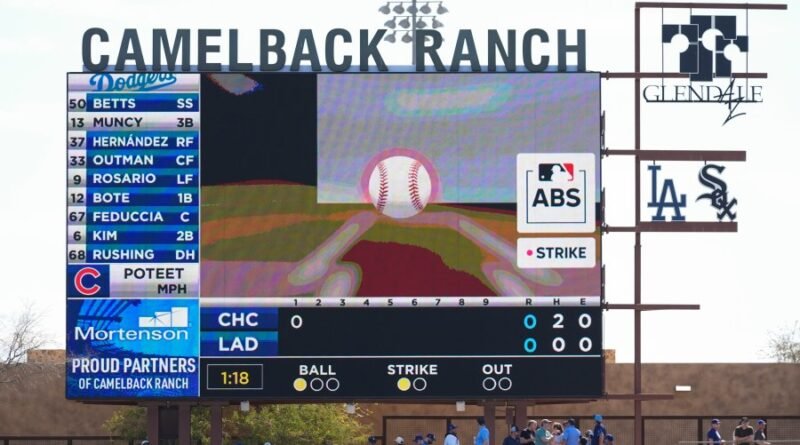This sport’s robot revolution has begun
Sports, in many ways, are about humans’ imperfect pursuit of perfection. Every athlete would love to shoot 100% from the free-throw line in basketball, complete every pass in football or hit 1.000 in baseball, but failure is inevitable — and from a fan’s perspective, that’s what keeps things interesting.
But now, one major sports league is taking a drastic step that could limit imperfections from its game. And it’s not the imperfections from the people on the field wearing colorful jerseys with their names on the back that they’re trying to fix. It’s the human errors from those officiating the game.
Spring training ushered Major League Baseball back this week, but it wasn’t the same old game with the same old rules.
This year, during spring training’s exhibition games only — for now — MLB is using a system fans have dubbed as “robo-umps.”
The Automated Ball-Strike System, or ABS, has been used in baseball’s minor leagues for a few years. It allows pitchers, catchers and batters to challenge rulings on called balls and strikes by the game’s home-plate umpire.
They must be used immediately after an umpire makes their decision on a pitch, and they can only be used by those three aforementioned players — not even managers request a challenge.

Each team has two challenges to use per game. The catch: a team only loses a challenge if the umpire’s original ruling is upheld. So, hypothetically, a team could use an infinite amount of challenges if they never get one wrong.
In other sports like basketball and football, challenge systems face criticism for taking momentum out of games with lengthy official reviews. The ABS won’t have that problem.
According to MLB, the addition of challenges added just 17 seconds to games in minor league experimentation, on average. When a pitch is challenged, all eyes go to the stadium’s scoreboard, where the automated system shows exactly where the ball was located in relation to the pre-determined strike-zone.
The technology is similar to the “Hawk-Eye” system used in tennis. In that sport, players can challenge whether a ball remained within the lines of play. Hawk-Eye is incredibly accurate and takes just a couple of seconds.
For the first time in the long, storied history of “America’s Pastime,” the strike-zone isn’t an imaginary square viewed through the eyes of an umpire. Now, it’s a tangible, real thing.
Fans that are still skeptical of the idea have some hope. The technology is only contracted to be used for this spring training. However, according to reports, there is a chance that ABS is a mainstay in regular and postseason MLB play starting in 2026.
Nonetheless, it’s probably something players are just going to have to get used to. Max Muncy of the Los Angeles Dodgers was the first player to fall victim to the technology, as Chicago Cubs pitcher Cody Poteet successfully challenged a pitch, overturning a called ball into a strike.
Muncy struck out that at-bat.
“When that ball crossed, I thought it was a strike right away and [home-plate umpire Tony Randazzo] balled it,” Muncy said, per MLB.com. “I look out there and [Poteet’s] tapping his head and I went, ‘Well, I’m going to be the first one.'”
